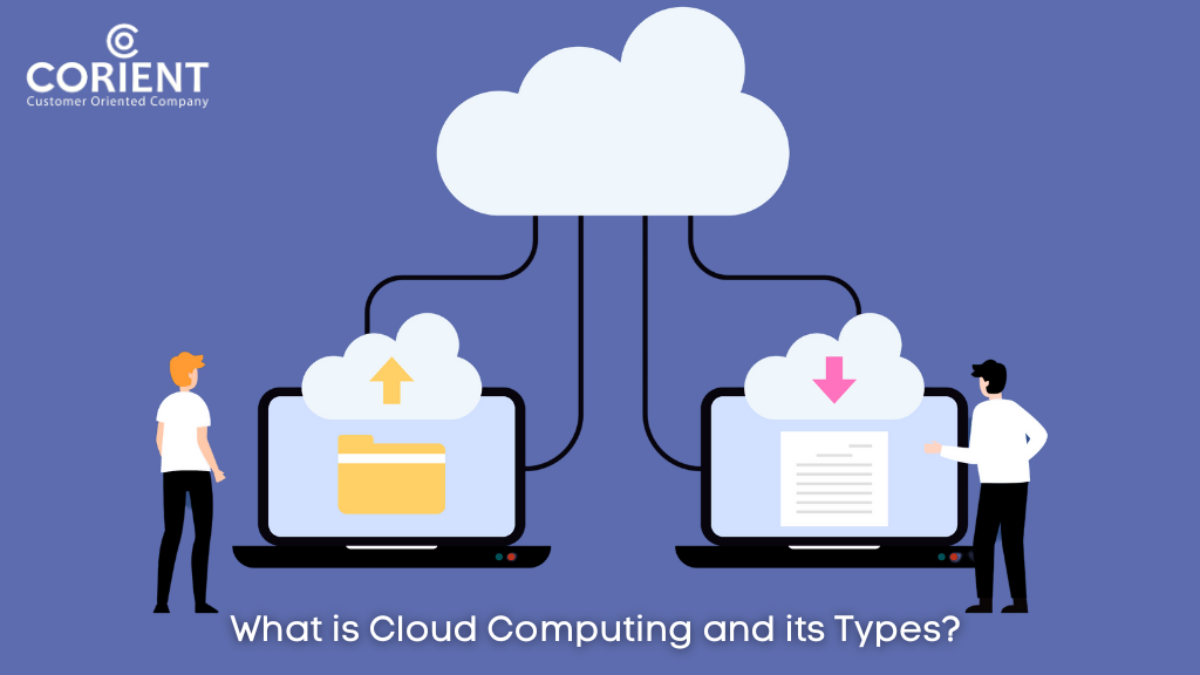What is Cloud Computing?
Cloud computing involves getting hosted services over the Internet, such as servers, databases, networking, and software applications. The data storage services are also part of this virtualised infrastructure that a cloud service provider manages in physical servers. Users can access computer system resources through cloud computing without any need to manage these resources themselves on demand. This includes processing power or data storage. Through cloud computing user has the ability to store files in the cloud which can be easily accessible via internet from any place of the earth. Cloud services are commonly split into three categories: Infrastructure-as-a-Service (IaaS), Platform- as-a-Service (PaaS), and Software-as-a-Service (SaaS). Further, types of clouds can also be categorized based on deployment models public, private, or hybrid; as well as through front-end and back-end layers. The front-end layer stands as the point where users make their interface and data is accessed through this software system stored at the back end.
Why is Cloud Computing Important?
The cloud is more than simply a piece of technology; it’s a dynamic force for change. Success is influenced by the cloud progression, which includes a spectrum of services and capabilities from edge to public cloud and all places in between. It is enabled by networks built on state-of-the-art techniques and prioritized around
the cloud. Data and Artificial Intelligence are the core of this transformation. At initial stage only data is migrated. Creating a reliable data platform that connects several corporate divisions is made possible by cloud computing. Advancements in AI and ML, particularly generative AI, require a contemporary data platform. The cloud facilitates, data drives, and artificial intelligence
Types of Cloud Computing
Clouds can be classified as public, private, or hybrid based on the specific deployment model used. Furthermore, the cloud model can be classified as platform-as-a-service (PaaS), software-as-a-service (SaaS), or infrastructure-as-a- service (IaaS) based on the services it offers.
Private Cloud: In private cloud a single organisation has exclusive access to computer services provided through a private IT network. It is also known as an internal, enterprise or corporate cloud is often controlled by internal resources and outsiders cannot access it. All of the advantages of a public cloud, like flexibility, scalability, and self-service, are also offered by private cloud computing, along with extra protection, control, and customisation.
Public Cloud: Services provided via the internet by third-party companies are referred as public clouds. Public cloud service is accessible to anyone who wish to purchase and use it. Users would only have to pay for the CPU cycles, storage, or bandwidth they need when using these services, which might be offered for free or as an on-demand service. Public clouds can save companies money since the cloud service provider handles system management, saving them from having to buy, manage, and maintain on- premises infrastructure. Businesses can more easily grow their storage requirements because they also provide scalable RAM and variable bandwidth.
Hybrid Cloud: Hybrid cloud computing consists of private and public cloud functionalities. Workload can be moved between private and public clouds based on changing computation and cost requirements according to the “best of both worlds” cloud concept. Hybrid cloud computing can help the time when processing and computing demand change. Use hybrid cloud approach just pay for the resources you need for the particular time. In summary, the advantages of a public cloud are provided by a hybrid cloud, but the security risks are eliminated. Cloud computing can be divided into three categories: IaaS (Infrastructure-as-a-Service), PaaS (Platform-as-a-Service), and SaaS (Software-as-a-Service), depending on the service model. Let’s examine each one in turn.
Infrastructure as a Service (IaaS): Infrastructure as a service, or IaaS, is a type of cloud computing where a service provider manages the provisioning of servers, storage, and networking through a virtual interface. With this service, the user does not need to manage the cloud infrastructure; instead, they have control over the storage, operating systems, and loaded programs. The user does not host servers, storage, software, hardware, or other infrastructure components; instead, a third party provider does. The supplier also maintains a backup copy of the user’s applications on the server.
Software as a Service: Subscribing to cloud-based software from suppliers is made possible via software as a service, or SaaS. There is no need for users to download or install programs on their local devices while using this type of cloud computing. Instead, the programs are located on a remote cloud network that can be accessed online or using an API. Hardware, middleware, application software and security are managed by the service provider.
Platform as a Service: Platform as a service, or PaaS, is a development and deployment platform provided by cloud computing that relieves users burden of building and managing infrastructure so they can design and run applications. With the resources it provides, users can develop cloud-based apps. After making a one-time payment to a vendor, consumers can access resources via a secure connection with this type of service. Customers can manage deployed programs with PaaS, but they are spared from handling the network, servers, operating systems, and storage that make up the underlying infrastructure. Enterprises may now focus on the deployment and
management of their applications, freeing them from the burden of software
maintenance, planning, and resource procurement.
Key Benefits of Cloud Computing
Cloud computing offers various benefits that is why it is becoming more popular. Businesses don’t need to setup a complete IT infrastructure hence their time and resource is saved. Let’s know further what benefits cloud computing offer.
Scalability: Cloud computing enables enterprises to quickly expand their user base from a few to thousands. An organization can be flexible by scaling up or
down its storage requirements based on necessity.
Reduced costs: Large financial investments are needed to maintain IT systems, which the cloud helps to mitigate. Businesses can save a significant amount of money by utilizing the cloud provider’s resources instead of having to buy pricey infrastructure. With cloud providers, organizations can further save costs by only paying for the services they utilize through the pay-as-you-go model.
Flexibility and Collaboration: Cloud computing gives you the best benefit of setting up a virtual office from anywhere. As well as the data on the cloud can be accessed easily via internet, so employees can easily work from any part of the world. Employees can connect with teams across locations work on same projects
by giving to access to the same file as a third-party vendor.
Business Continuity: In case of an outage or emergency, your data is securely stored and safeguarded by the cloud. Resuming work after the systems are back
up and running is much easier as a result.
Competitive Edge: The cloud handles a number of business-related tasks, like software licensing, IT infrastructure maintenance, and staff training for data
management. Because you are investing less time and money, you have an advantage over your rivals.
Conclusion:
Cloud computing changed IT in a whole new way. Improved customer service, product and service development, and research and development will all be facilitated by cloud computing in the future. When it comes to the tools and software they select, the cultures they establish, or the business plans they implement, company executives that seize the opportunity presented by cloud computing are certain to obtain a competitive advantage in this dynamic market.

